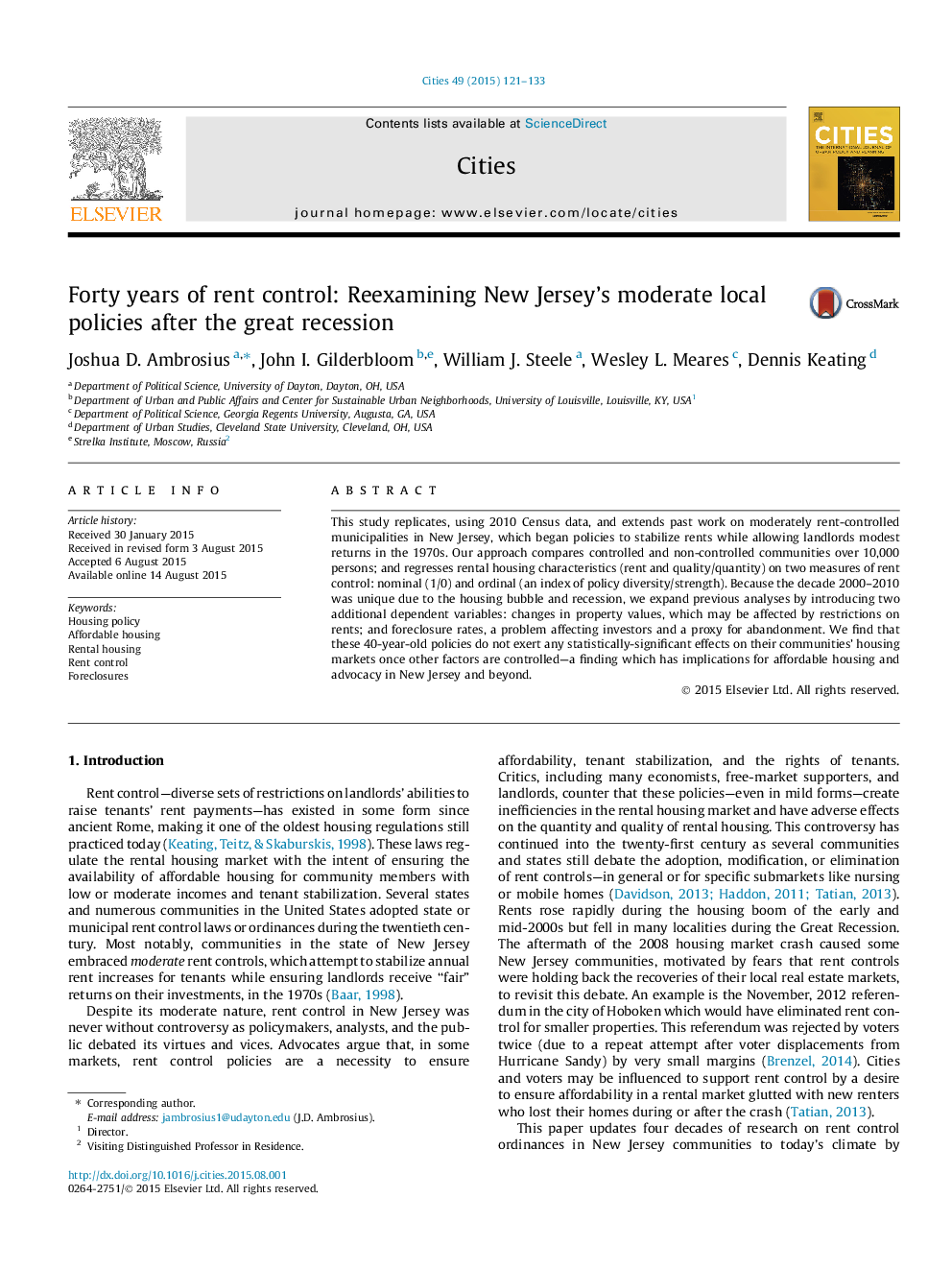| Article ID | Journal | Published Year | Pages | File Type |
|---|---|---|---|---|
| 1008233 | Cities | 2015 | 13 Pages |
•New Jersey cities have had moderate rent control policies for four decades.•We analyze rent control’s (presence and strength) impact on cities’ rental housing.•We compare controlled and non-controlled cities in our models.•Ultimately, rent control exerts no significant impacts at the aggregate level.•We encourage a rethinking of affordable housing by proponents and opponents.
This study replicates, using 2010 Census data, and extends past work on moderately rent-controlled municipalities in New Jersey, which began policies to stabilize rents while allowing landlords modest returns in the 1970s. Our approach compares controlled and non-controlled communities over 10,000 persons; and regresses rental housing characteristics (rent and quality/quantity) on two measures of rent control: nominal (1/0) and ordinal (an index of policy diversity/strength). Because the decade 2000–2010 was unique due to the housing bubble and recession, we expand previous analyses by introducing two additional dependent variables: changes in property values, which may be affected by restrictions on rents; and foreclosure rates, a problem affecting investors and a proxy for abandonment. We find that these 40-year-old policies do not exert any statistically-significant effects on their communities’ housing markets once other factors are controlled—a finding which has implications for affordable housing and advocacy in New Jersey and beyond.
